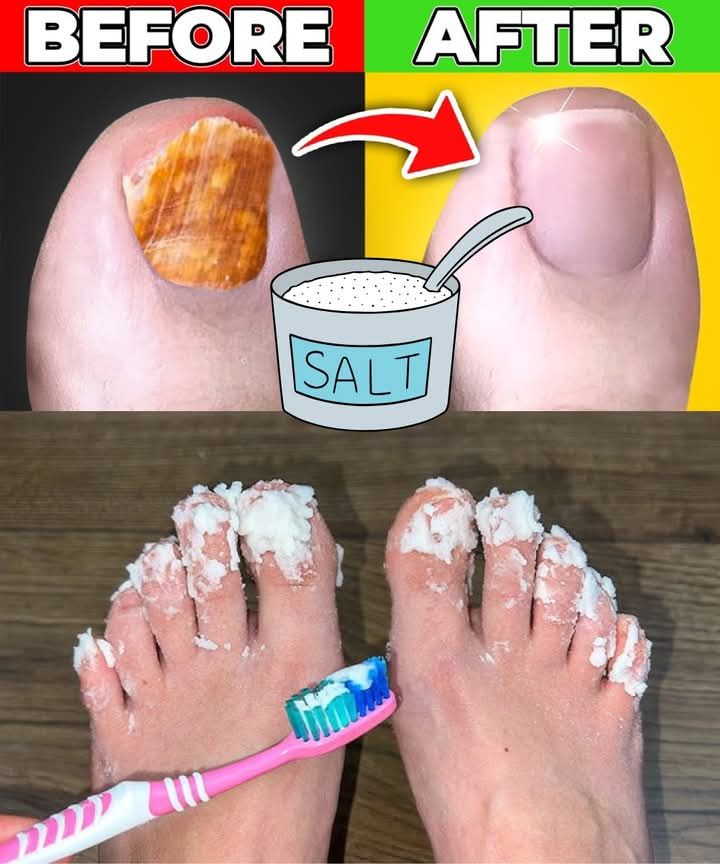ADVERTISEMENT
**A Natural Remedy for Nail Fungus: A Comprehensive Guide to Fast and Effective Treatment**
Nail fungus, medically known as onychomycosis, is a common and often stubborn condition that affects millions of people worldwide. It occurs when fungi, particularly dermatophytes, invade the nail and surrounding tissue, causing discoloration, thickening, crumbling, and sometimes pain. While nail fungus is generally not dangerous, it can be unsightly, uncomfortable, and difficult to treat.
Conventional treatments for nail fungus often involve antifungal medications, which can take several weeks or even months to show results and may come with unwanted side effects. However, there are natural remedies that some people swear by for clearing up nail fungus quickly and effectively. In this article, we will explore a variety of natural treatments that can help eliminate nail fungus, with a particular focus on remedies that have been shown to work for many individuals.
We will discuss how to identify nail fungus, the causes behind it, and the natural treatments and prevention methods that can aid in restoring healthy nails. Whether you’re struggling with a mild infection or a more persistent fungal issue, this guide will provide you with the knowledge and remedies you need to combat nail fungus without relying on pharmaceutical solutions.
—
## **What is Nail Fungus? Understanding the Condition**
Nail fungus, or onychomycosis, refers to a fungal infection that affects the nails, causing them to become discolored, thickened, brittle, and often painful. It can affect both fingernails and toenails, but it is more common in toenails due to the warm, dark, and moist environment inside shoes, which promotes fungal growth. The infection typically starts at the tip of the nail and spreads inward, affecting the entire nail if left untreated.
### **Symptoms of Nail Fungus**
The symptoms of nail fungus can vary depending on the severity of the infection, but common signs include:
– **Discoloration:** The nail may turn white, yellow, or brown, often beginning at the tip of the nail and spreading toward the base.
– **Thickening:** A fungal infection can cause the nail to become thickened, making it difficult to trim and increasing the risk of injury.
– **Brittleness:** The infected nail may become brittle and prone to breaking or crumbling.
– **Distorted Shape:** The nail may start to lose its natural shape, becoming warped or distorted.
– **Foul Odor:** In some cases, a nail infected with fungus may emit a foul odor due to the accumulation of debris and infection.
– **Pain and Discomfort:** In more severe cases, the fungus can cause pain, especially when wearing shoes or putting pressure on the affected nail.
While these symptoms may not always be painful, the aesthetic concerns and potential for the infection to spread can make nail fungus a frustrating problem.
—
## **Causes of Nail Fungus**
Nail fungus is caused by a group of microscopic fungi called dermatophytes. These fungi thrive in warm, moist environments, which is why toenails are more frequently affected than fingernails. Nail fungus can occur when the fungi make their way into the nail through tiny cuts, cracks, or other breaches in the skin around the nail.
Some of the common causes of nail fungus include:
1. **Warm and Moist Environments**: Fungi thrive in damp, warm conditions, which makes sweaty feet and poorly ventilated shoes ideal breeding grounds.
2. **Trauma to the Nail**: Injuries to the nail or surrounding area can create an entry point for fungi, allowing them to invade and spread.
3. **Poor Hygiene**: Not keeping the nails clean and dry increases the risk of fungal infections.
4. **Age**: Older adults are more likely to develop nail fungus because their nails grow more slowly, making them more susceptible to fungal infections.
5. **Weakened Immune System**: People with compromised immune systems, such as those with diabetes, HIV, or cancer, are at higher risk for nail fungus.
6. **Diabetes and Other Medical Conditions**: Certain health conditions, like diabetes, can increase the likelihood of developing nail fungus because of compromised circulation and immune function.
7. **Athlete’s Foot**: Fungal infections of the feet, such as athlete’s foot, can spread to the toenails and lead to fungal nail infections.
Nail fungus is contagious, and it can spread to other nails or to other people through direct contact or by sharing contaminated items like towels, shoes, or nail clippers.
—
## **Natural Remedies for Nail Fungus**
While traditional antifungal treatments often take time to work and come with potential side effects, many people have found relief from nail fungus using natural remedies. Below, we will discuss some of the most effective and well-known natural treatments that may help eliminate nail fungus quickly and efficiently.
### **1. Tea Tree Oil**
Tea tree oil is one of the most popular and widely used natural remedies for nail fungus. Known for its antifungal, antiseptic, and antibacterial properties, tea tree oil has been shown to help fight the fungi that cause nail infections.
For Complete Cooking STEPS Please Head On Over To Next Page Or Open button (>) and don’t forget to SHARE with your Facebook friends
